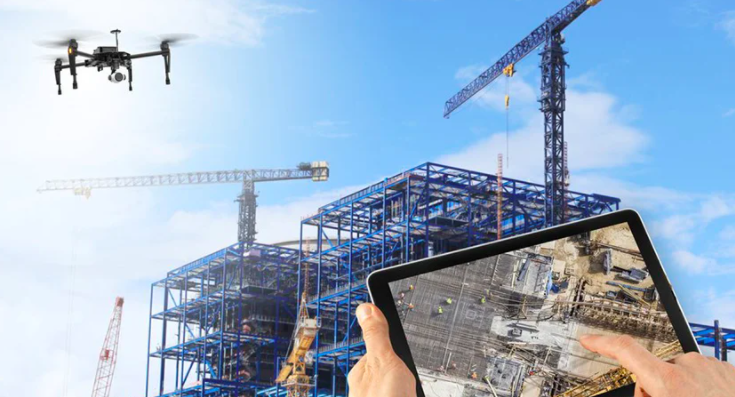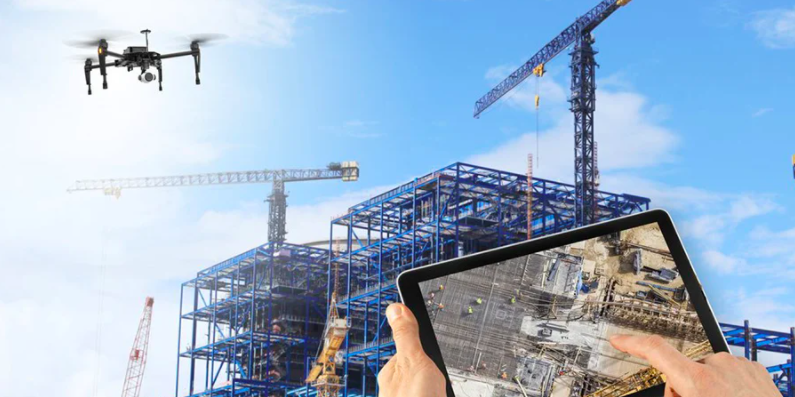The constant expansion of the digital world is reshaping many industries. Construction spaces, too, are being influenced by newer and modern technologies. Gone are the days when you could locate only orange cones in construction sites.
Today’s job sites are continuously brimming with evolving technologies. By adopting advanced technologies, the construction field is opening up its doors to welcome the workforce of tomorrow. This article features six types of construction technologies that are grabbing attention today.
Autonomous Heavy Equipment
Presently, several job sites are using autonomous heavy equipment to perform grading, site work, and excavation effectively. This kind of technology gives operators the freedom to stay separated from the machines.
As a result, this allows firms to complete the same amount of work with lesser workers.
Such machines use drones, GPS, and sensors. They travel throughout the construction site and perform site work.
Augmented GPS is a blend of satellites and online base stations. This is used to geofence the construction space so that autonomous equipment can move around the space with absolute accuracy.
Artificial Intelligence
There was a time when human intelligence placed orange cones throughout a construction area. Today, artificial intelligence has taken the spotlight.
Many job sites are blending AI with robotics for completing strenuous jobs such as bricklaying. AI is an added advantage for different construction projects.
It improves workflows, increases safety, and completes jobs much quicker and that too, without any human interaction. It can successfully replicate the actions, decisions, and judgments of human beings. It can find out whether any information is missing. It can ask questions, collect data and use it effectively.
Building Information Monitoring (BIM)
It is one of the most popular construction technologies in use today. It involves digital representations in 3D models. This leads to improved designs and better constructions.
BIM introduces enhanced accuracy to the entire process of construction. It can reflect the project development in a highly collaborative and open environment.
Since alterations in the BIM model take place in real-time, the updates or changes made are promptly communicated to all the group members. This helps everyone to work with the latest and updated information.
This technology provides multiple advantages to construction firms. It improves collaboration between groups, helps people to stay connected, and offers more access to resource management.
Cloud and Mobile-based technologies
Before the growth of various construction technologies, one could see construction areas punctuated with only orange cones. In recent years the industry has witnessed massive changes, thanks to the cloud and mobile-based technologies.
These technologies enable contractors to share the real-time data from construction sites to all the parties involved in the construction process and to the other entities who are responsible for the same.
Cloud and mobile-based technologies have greatly influenced the evolution and changes that have recently taken place in job sites.
By sharing real-time data, they have enhanced business efficiency, improved digital experience, increased productivity, and bettered the overall organization.
Site sensors
Site sensors are also one of the most popular technologies that are being employed in various construction sites. These are most efficient in monitoring things such as noise levels, temperature, volatile organic compounds, and dust particulates.
With the inclusion of site sensors, the usage of orange cones has become very limited to alert the workers or make them aware of a particular area in the entire construction space. Site sensors can be mounted at different places within the construction sites.
They help in alerting workers instantly when they go beyond the accepted levels of permissible exposure. Data is collected and further studied to lessen the exposure levels.
Wearables
Nowadays, many construction sites are using wearables to monitor workers. They also help in ensuring that the environment at a construction site is safe. Wearable technology is being embedded into gloves, work boots, hard hats, and safety vests.
Some contractors are also using construction wearables that are equipped with environmental sensors, WI-Fi, biometrics, voltage detectors, and location trackers. These help a lot to supervise the movements of the different workers at the construction sites.
With the help of geofencing, site supervisors can also establish dangerous or restricted zones that alert all the workers through the perfect combination of lights and alarms.





